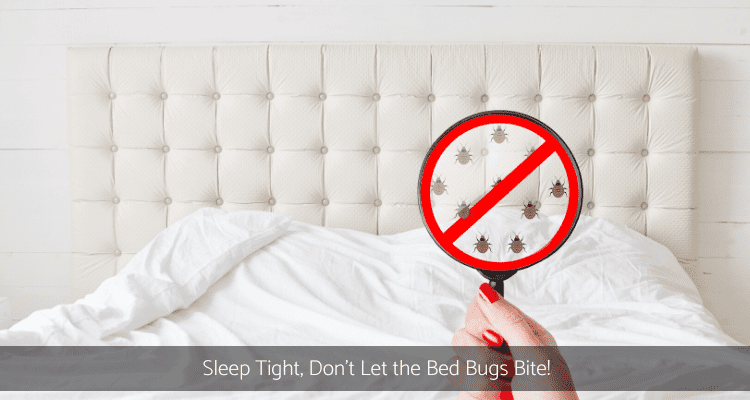We spend about one third of our life in bed, and the more comfortable the mattress, the better we sleep.
The phrase “Good night, sleep tight” may have history as far back as the Middle Ages. They slept on mattresses made of crossed ropes, strained over a wooden frame work, similar to a hammock. From time to time, the ropes loosened with the weight, and needed to be tightened to make for a better night’s sleep.
By the 16th century, Shakespeare’s time, mattresses were secured on bed frames by ropes to form a platform. When the ropes became loose, the mattress would sag, making sleeping more uncomfortable. A special iron tool was used to tighten the mattress, making the bed firmer for a good night’s sleep.
Yet, there appears to be some doubt among researchers in word origins. “Sleep tight” appears to date back only as far as 1866. One of the definitions of “tight”, used in the 18th and 19th centuries was “soundly”. “Sleep tight” simply meant “sleep well.”
Travelling with bed bugs
“Don’t let the bed bugs bite” was written as an addition to an old nursery rhyme and may have come a little later when blankets were pulled in tight to keep away creepy crawlies like insects, bed bugs and rats.
Bed bugs, small 4-5mm wingless insects, oval in shape, reddish-brown in colour, thin and flattened body, are often very difficult to detect. Bed bugs are active at night, rarely seen in daylight, and bite any areas of exposed skin, feeding on human and animal blood. They can live without food for up to a year.
Bed bugs can infest a home, unit block, hotel or other accommodation and hide in extremely small crevices and cracks in and around beds, furniture and rooms, dark locations mostly, close to their food source. The most common place to find them is in the bed, seams, air holes of the mattress, ensemble base, bed frame and headboard.
While some bites may go unnoticed, bed bug bites are painless. Localized swelling and itching can occur, as well as skin irritation, inflammation or infected lesions when scratched, lasting for several days. It is not believed that they transmit diseases to humans.
Once, they were a common public health pest worldwide, declining during mid 20th century, but now it appears infestations are on the increase. They are distributed world wide, readily transported via luggage, clothing, bedding and furniture.
What is the difference between a bed bug and a dust mite you may ask. Not only do they both like to live in or around our beds but also eat, defecate, grow, mate, lay eggs and hatch to start the cycle again in a short space of time.
- Dust mites have eight legs and belong to the spider family while bed bugs have 6 legs and belong to the insect family.
- Dust mites, with a fully rounded body, feed on human dander and skin cells differentiating from bed bugs, with a flattened, round body, feed and engorge on blood.
- The dustmite is invisible to the naked eye not only in size but is translucent, while bed bugs are tiny, reddish-brown and can be seen.
- Most importantly, dust mites, larger in quantity, contribute to allergies, particularly their excrement known as dust mites allergy.
- On the other hand, bed bugs are less in number, classed as parasites and have been known to cause anaphylaxis.
- Dust mites and their allergens can be minimised with a number of options including dust mite covers and mattress cleaning equipment.
- Bed bugs need to, and can be eradicated with the correct treatment and control. The key is to find them.
Minimise infestations with dust mite control
Make sure you wash your bed sheets and pillowcases weekly and your doonas and curtains regularly in hot water.
Vacuum more frequently and if you don’t have HEPA filter vacuum, damp cloth the surface.
Dust mite elimination is not a realistic possibility but by making the home or office environment inhospitable, their allergens can be minimised.
Bed bugs: find them and eradicate with a professional.
Towards healthier living Carol Parr ♥
As a result of working with me, women and their families thrive, work places and their personnel prosper, mouldy and chemical / electrical sensitive occupants heal. They’re healthier, they’re alert, they’re happier, more relaxed, more productive, and enjoying life.
Together we bring about healthy indoor environments and create rooms that provide calmness, healthy sleep, relaxation and restored energy for you and your family, create workplaces that provide ideal personnel attendance and elevated productivity.
By returning indoor spaces to more natural conditions, we strengthen you and your family and your personnel’s mind, body and spirit. It’s nice that it also sustains our planet’s ecology, you’d agree.
You can find my latest enterprises by clicking here: http://www.linkedin.com/in/carolparr





